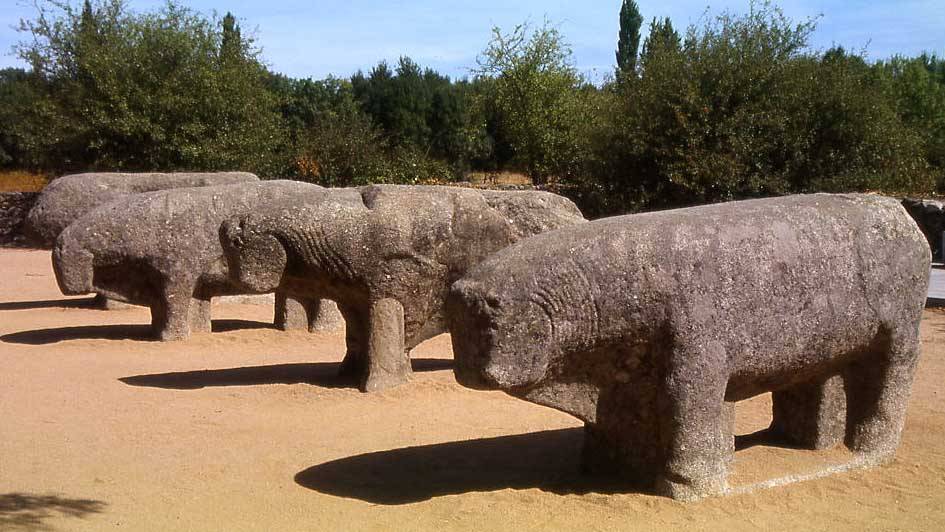The Bulls of Guisando are a set of ancient sculptures located in Spain. They depict four bulls, or verracos, and date back to the 2nd-3rd century BC. These granite figures are thought to have been created by the Vettones, reflecting the animalist religious practices of the time. The site gained historical significance due to the Treaty of the Bulls of Guisando in 1468, which recognized Isabella as the heir to the throne of Castile. The Bulls of Guisando stand as a testament to the pre-Roman history of the Iberian Peninsula and continue to intrigue historians and visitors alike.
The Vettones
The Vettones were a pre-Roman people of the Iberian Peninsula, inhabiting the western part of modern-day Spain, primarily in the regions of Extremadura and Castile and León, from around the 6th century BC until their integration into the Roman Empire in the 1st century BC. This ancient group is part of the larger Celtic family, although their exact origins and the extent of Celtic influence on their culture and society remain subjects of scholarly debate.
Throughout their history, the Vettones were known for their formidable skills in warfare, particularly in guerrilla tactics, which they employed effectively against their neighbors and, eventually, against the Romans. Their society was organized in small, fortified settlements known as “castros,” indicative of a tribal social structure. These hill forts, often located on elevated ground, provided strategic defense advantages and are among the most significant archaeological remnants of Vettonian civilization.
Religiously, the Vettones, like many ancient Celtic peoples, practiced a form of animism, venerating natural elements and phenomena, with a particular reverence for bulls. This is evidenced by the numerous granite sculptures of bulls found in their territory, known as “verracos.” These sculptures are believed to have served both a religious and a territorial marker function, symbolizing strength and protection.
Daily life for the Vettones revolved around agriculture, livestock breeding, and hunting, with cattle being particularly important both economically and religiously. Their social structure was relatively egalitarian, with communities led by chieftains or local kings. These leaders were responsible for the defense and welfare of their communities, and their authority was often reinforced by their prowess in battle.
The Vettones had several encounters with the Romans, initially as part of the broader resistance against Roman expansion in the Iberian Peninsula. The most notable of these conflicts was their participation in the Lusitanian War (155-139 BC) against Rome, alongside other Iberian tribes. Despite their fierce resistance, the Vettones were gradually subdued by the Roman legions, and by the end of the 1st century BC, their territory was fully incorporated into the Roman province of Lusitania.
Under Roman rule, the Vettones underwent significant cultural and social changes, including the adoption of Latin, Roman law, and customs. However, they also contributed to the Roman Empire, particularly in the form of auxiliary troops in the Roman army. The legacy of the Vettones is still visible in the archaeological sites and cultural traditions of western Spain, where their influence persisted long after their assimilation into the Roman world.
There are no specific records of kings or queens among the Vettones, as their society was organized along tribal lines with local chieftains. These leaders were more akin to tribal elders or war chiefs rather than monarchs in the traditional sense. Their power was derived from their ability to lead in times of war and to negotiate peace, reflecting the decentralized and clan-based nature of Vettonian society.
In conclusion, the Vettones represent a fascinating chapter in the history of the Iberian Peninsula, showcasing the resilience and adaptability of a people caught between the ancient and Roman worlds. Their legacy, from the verracos that dot the Spanish landscape to the remnants of their hill forts, continues to be a subject of interest for historians and archaeologists, offering insights into a civilization that once played a pivotal role in the complex tapestry of ancient European societies.

